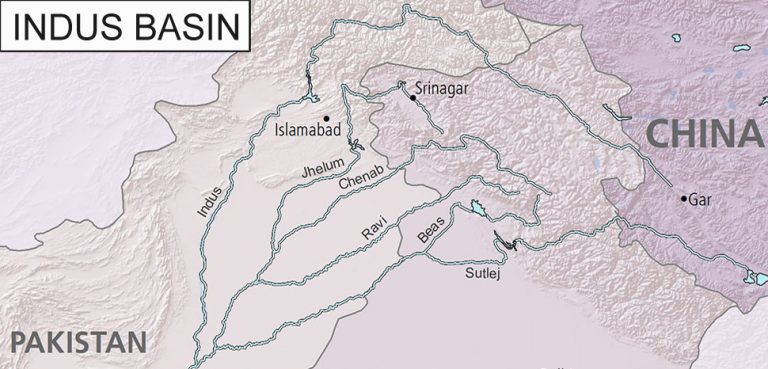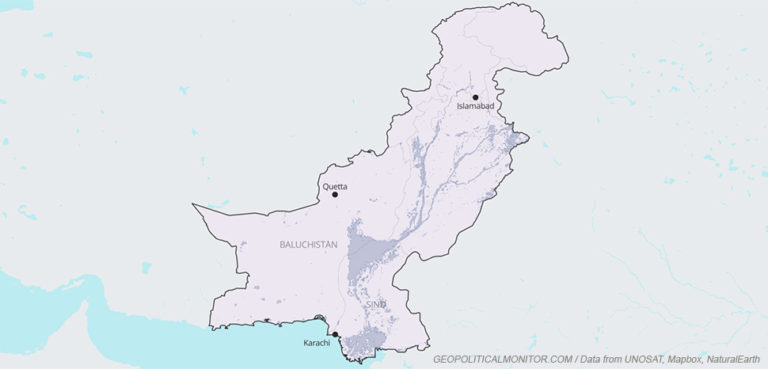
Saudi Arabia (‘Extremely High’ Water Stress Levels)
As a state presiding over vast tracts of desert, it’s not surprising that Saudi Arabia is a place where water resources are stretched to the limit.
The Kingdom draws on three main sources: underground aquifers, desalinized seawater, and mountain streams, which constitute 40%, 50%, and 10% of drinking water respectively.
The country is a world leader in desalinization technology, accounting for around one-fifth of all global desalinization activity. The process is infamously energy-intensive; in 2009, one Saudi minister estimated that one-quarter of the Kingdom’s oil and gas production went into generating fresh water and electricity. Renewable-powered desalinization methods are technically possible but have yet to manifest, in large part due to the Kingdom’s abundant fossil fuel wealth, which creates a powerful economic incentive to favor conventional methods.
A new plant is currently under construction at Rabigh, which will process 600,000 cubic meters of water once its operational.
Aquifers are another source of water in the Kingdom and, like in many places around the world, they are severely overdrawn due to population and agricultural pressures. By one particularly harrowing estimate from Mohammed Al-Ghamdi of King Faisal University, Saudi Arabia’s main aquifers will be completely depleted in approximately one decade.
Even if a more sustainable approach is adopted toward aquifer management in the future, efforts to replenish underground water levels will be negatively impacted by climate change, which is projected to increase average temperatures and reduce rainfall levels in the region.
Spain (‘High’ Water Stress Levels)
Spain’s water supply comes from surface water (63%), groundwater (33%), and desalination and other (4%).
Both surface- and underground-sourced supplies have seen increased stress levels over the past two decades.
Record extractions and dwindling replenishment have combined to put many of the country’s underground aquifers in a state of extreme stress. Spain’s aquifer extraction was the third highest in Europe mid-decade, and though water levels range throughout Spain’s diverse geography and climate, some of the most stressed aquifers are teetering on the point of collapse. For example, three of the five subterranean reserves of the Donana aquifer have nearly been depleted, and a fourth has dangerous levels of pollution.

Donana illustrates another issue impacting national groundwater supplies: contamination. Farmers’ overreliance on nitrate-based fertilizers has permeated down into the water table with harmful results. Again, this is a problem that varies region-to-region. One of the worst-affected regions is Valencia in southeast Spain, where over 4% of the population’s drinking water contains nitrates in excess of the recommended level.
Illegal wells are another complicating factor in government- and EU-led initiatives to alleviate Spain’s water crisis. The worse that water shortages get, the more farmers’ bottom lines are impacted, and the more inclined they are to seek illegal supplies. Back in 2006, the number of illegal wells was estimated at 500,000, and these ‘bore holes’ have also produced tragedy on a much more personal level; for example, the death of Julen Rosello, a two-year-old who fell into one near Malaga in 2019.
Spain’s aquifer outlook is mirrored by its surface water supply, which is even more susceptible to climate change-induced effects such as increased evaporation and decreased rain levels. Dry years are more and more common, and reservoirs are less resilient to weather them. In one extreme example, the Sau reservoir near Barcelona fell to just 18% of its normal level during the unprecedented drought of 2003. Crisis levels were reproduced during subsequent droughts in 2005, 2008, and 2017.
Spanish agriculture is a major drain on the national water supply, accounting for anywhere between 60-80% of all water usage, a rate that fluctuates on the basis of availability (less is used in times of drought). It thus goes without saying that, in this semi-arid country, climate-induced water scarcity represents a serious threat to the agricultural industry. The threat is particularly pronounced for Spain’s fruit growers, which contribute to overall fruit and vegetable exports worth around 12.8 billion euros per year.
Chile (‘High’ Water Stress Levels)
Chile’s unique geography makes for some unique water conservation challenges. As a narrow strip of land traversing several climate zones, from the Atacama Desert in the north to the glacier fields of the south, Chile represents both feast and famine in terms of water supply. Yet the factors that have landed Chile in the ‘high risk’ column have less to do with its natural endowment and more to do with distribution challenges and national politics.
Chile is a staggering 4,270 kilometers long; its water heartland is located in the south, and its major population centers are in the more arid and water-stressed central and northern regions. Transportation alone is a logistical nightmare for government planners, and various solutions are currently being considered to alleviate the problem, including a 2,030 km ‘water highway’ coastal pipeline.
Up and down this vast vertical expanse, Chile faces climate-related threats to its water supply. Since the country is far more reliant on surface water than groundwater reserves, many links of its water supply chain remain susceptible to evaporation as temperatures rise. For one, many of Chile’s rivers and streams are fed by glaciers that themselves are dwindling due to a warming climate, leading to reduced downstream flow. Two, Chile faces the same replenishment pressures that are observable in other water-stressed countries, mainly a lack of rainfall and an increased propensity for severe weather patterns. Even now, Chile is in the grips of a historic drought – one that has been ongoing for nearly a decade – which is drying out reservoirs and squeezing drinking water supply in major population areas like Santiago.
Urban water stress will be the rule rather than the exception going forward: in Santiago alone, access to clean water resources is expected to fall about 40% by 2070 if current trends hold.
Water scarcity has periodically emerged as a political flashpoint due to the high degree of privatization of the country’s water supply, and the resulting high price premiums for its usage (for example, Santiago’s residents pay more for their water than almost any other metropolitan area in South America). Privatization also impacts national conservation efforts by making it harder for the government to strike a balance between private interests and public demands of long-term sustainability. Avocado farming and lithium mining are two particularly water-hungry industries that heap extraction pressures on the national supply.
When discontent boiled over into national protests in 2019, water issues figured prominently among the other economic and governance concerns that brought millions into the streets. However, this long-standing dynamic is now primed for an overhaul: earlier this year Chileans voted to scrap the Pinochet-era constitution that had entrenched private interests in the national water supply.
Whether the old document is replaced with a constitution that allows for more public control over Chile’s water remains to be seen, but either way, bold action will be needed in the future if Chile is to stabilize its water outlook and avoid the worst-case scenarios of an agricultural industry – and society – remade by climate change.



